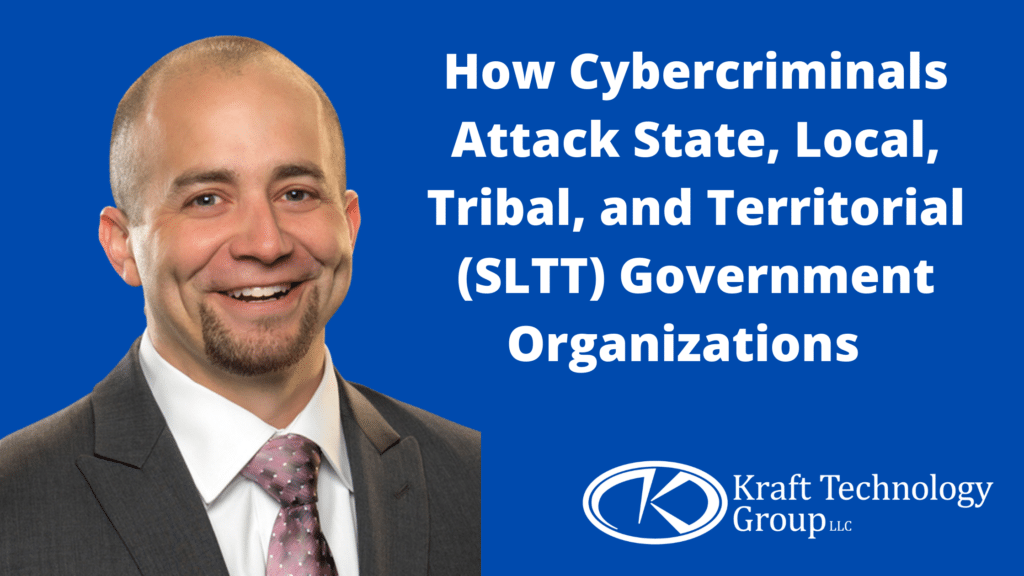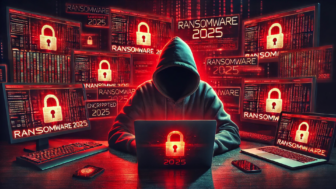How Cybercriminals Attack State, Local, Tribal, and Territorial (SLTT) Government Organizations
Cyberattacks are becoming an inevitable part of everyday business for organizations of all sizes worldwide, with cases continually rising and attacks becoming more sophisticated. A cyberattack can have devastating and long-lasting consequences for an entire organization.
State, local, tribal, and territorial (SLTT) organizations in the U.S. are increasingly becoming targets of cyberattacks at an alarming rate. According to Verizon, 16% of breaches involved the public sector, compared to 15% in healthcare organizations and 10% in the financial industry. Attackers often target SLTT organizations since they know their security teams run complex networks and deal with numerous third-party systems and services. It is indisputable that governmental organizations possess lots of data that is vital and highly classified. So for different motives, organizations and individuals sponsor cyberattacks to lay hold of this information. At times, these attacks could be used to manipulate governmental statistics or shut down the government’s functional aspects, such as transportation, energy, and finance.
Despite the growing cybersecurity threats, many SLTT cybersecurity teams continue to struggle with reduced security budgets and a shortage of cybersecurity experts and professionals to fill open positions. The demand for government employees to work remotely due to the pandemic and citizens’ requests to access government resources online has only added to their security challenges.

What Forms of Cyberattacks Do Attackers Carry Out Against SLTT Organizations?
The most significant forms of security threats to SLTT organizations are hacktivism and malware.
1. Hacktivism
Hacktivism is the act of hacking and activism for politically or socially motivated purposes. A hacktivist uses the same tools and techniques as a hacker but does so to disrupt services and bring attention to a social or political cause.
2. Malware Attacks
Most cybercriminals use malware against SLTT organizations. Malware is malicious software designed to damage, disrupt, and perform malicious actions on a device. Malware can be introduced to a system in various forms, such as emails, portable media, downloaded software, and malicious websites. Various types of malware have distinct capabilities depending on their intended purpose, such as altering data in a system, disclosing confidential information, issuing commands to a system, providing remote access to a system, or destroying files.
While malware has many subsets, the one that is mostly used against SLTT organizations is ransomware. Ransomware is a type of malware that blocks end-user access to a device, system, or file until a ransom is paid. Ransomware does this by encrypting files on the endpoint, threatening to erase files, or blocking system access.
Other common types of malware affecting SLTT organizations include:
- Bots: These are self-propagating programs that infiltrate devices and connect them to a central server. This network is called a botnet. Botnets use your device’s power and memory to send spam, perform DDoS attacks, and other resource-hungry actions.
- Trojans: This is malware that appears to be a legitimate application or software that can be installed. Trojans can provide a backdoor to an attacker and subsequently full access to the device, allowing the attacker to steal sensitive information or download additional malware.
- Spyware: This is malware that records keystrokes, listens in via computer microphones, accesses webcams, takes screenshots, and sends the information to a malicious actor. This type of malware may give attackers access to usernames, passwords, any other sensitive information entered using the keyboard or visible on the monitor, or viewed through the webcam. Keyloggers, which mainly record keystrokes, are the most common type of spyware.
- Worms: These are like viruses, but they are standalone programs that don’t need a host file to spread. They self-replicate and spread through networks automatically.
- Rootkits: They allow hackers to control your device without your knowledge. Once a rootkit has been installed, the hacker can launch files on your device and configure its system. This allows them to spy on your usage and steal your information.
- Downloaders/Droppers: This malware, which in addition to its malicious actions, allows for other, often more dangerous, malware to infiltrate the infected system.
How Can You Protect Your Organization From Cyber Attacks?
The following are cybersecurity measures that you should implement to protect your organization from cyberattacks:
- Develop a Cybersecurity Response Plan: A response plan is a well documented written plan with distinct phases that will help you deal with a cybersecurity incident.
- Installation of Security Software: Security software such as antivirus, anti-spyware and anti-malware programs help detect and remove malicious programs.
- Adopt Cloud-based Computing Solutions: Cloud security consists of technologies that work together to protect cloud-based systems, data, and infrastructure.
- Regularly Back Up Your Data: Frequently back-up your data on an external hard-drive or the cloud to ensure that your information is stored safely.
- Secure Mobile Devices: Protecting these devices entails encryption, password protection, and enabling the ‘wiping’ option.
- Implement Access Control and Authorization protocols: Access control and authorization methods will guarantee that users are who they say they are and have the appropriate authority to access company data.
- Implement a Firewall: Using a firewall helps you establish a barrier between your internal network and incoming traffic from external sources to block malicious traffic.
- Implement Cybersecurity Awareness Training: Cybersecurity awareness training increases your employees’ awareness levels and gives them the practical skills needed to better protect your business from the dangers of data breaches, network attacks, and ransomware threats.
Cyberattacks are not limited to particular organizations. Governments in various parts of the world are continually under sophisticated attacks from rival nations, malicious actors, and terrorist groups. There is, therefore, a need to put security measures in place to curb these criminal acts.
Are You Looking for a Leading Cybersecurity Solutions Provider?
Kraft Technology Group, an IT services company in Nashville, offers years of experience and expertise in providing cybersecurity solutions to organizations throughout Nashville, Franklin, Brentwood, and surrounding areas.
Talk to us today and let us find you security solutions that will help you secure your network and data.




